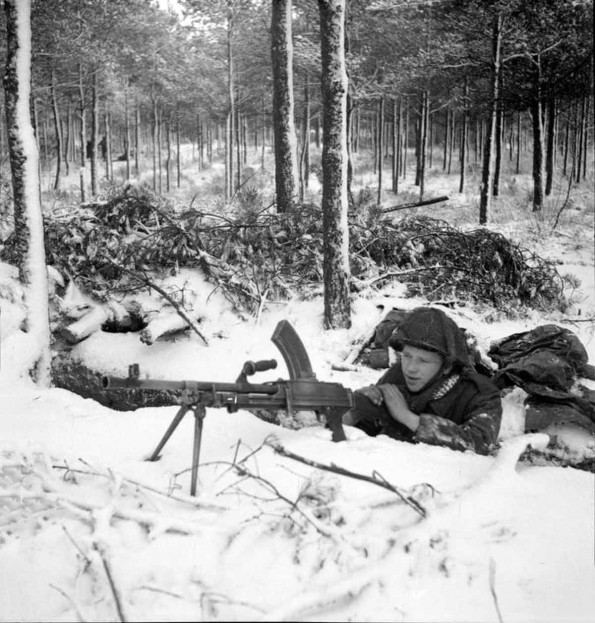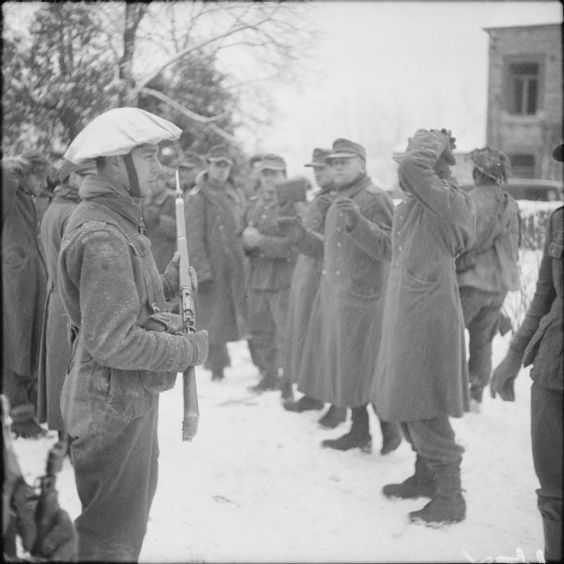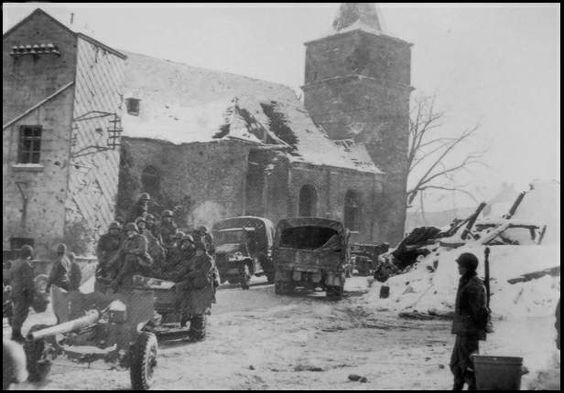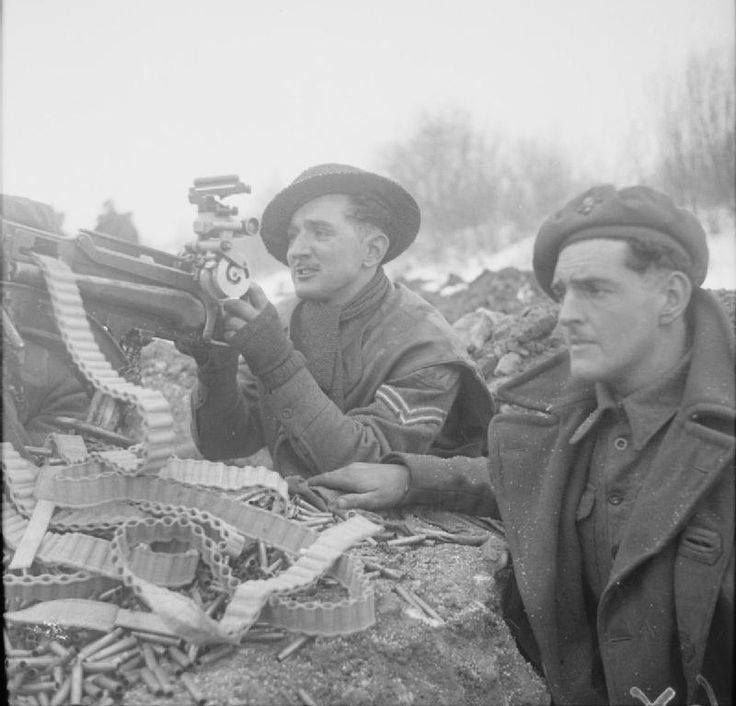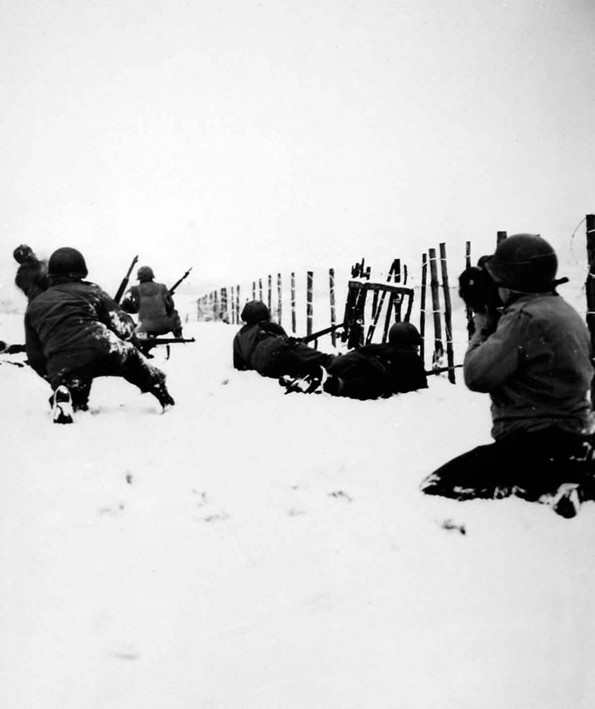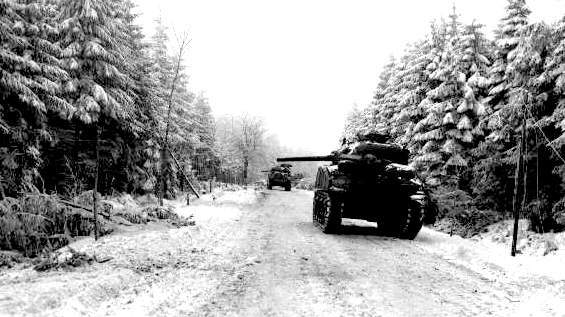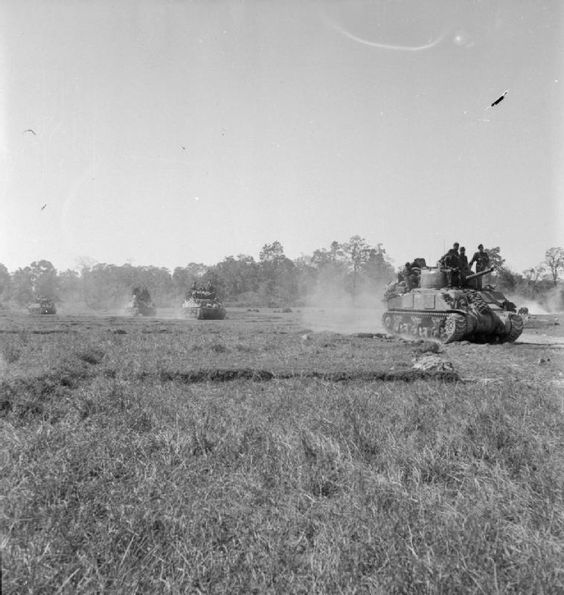Air Operations, CBI
BURMA- All 10th Air Force combat aircraft are grounded by bad weather.
- 5 308th Heavy Bomb Group B-24s attack Fort Bayard and shipping in Samah Bay, Hainan.
Air Operations, East Indies
FEAF B-25s and fighter-bombers attack targets on Celebes.
[Air Operations, Europe
RAF BOMBER COMMANDEvening Ops:
- 645 Lancasters and 9 Mosquitos of Nos. 1, 3, 5, 6 and 8 Groups are sent to hit Munich. Bomber Command claims a successful area raid, with the central and some industrial areas being severely damaged. This is the last major raid on Munich.
- 11 Lancasters are lost and 4 more crash in France.
- 54 Mosquitos are sent to Hannover, 18 to Nuremberg and 12 to Hanau, and there are 45 Mosquito patrols and 38 RCM sorties.
- 2 Mosquitos are lost, 1 from the Hannover raid and 1 from a Group 100 operation.
- The last Bomber Command Wellington operation is flown on this night by Flying Officer B.H. Stevens and his crew of No. 192 Squadron. The Wellington is on an RCM flight over the North Sea 'to investigate enemy beam signals connected with the launching of flying bombs and believed to emanate from marker buoys'. Bad weather over the North Sea causes the flight to be curtailed but the Wellington lands safely, the last of more than 47,000 sorties carried out by this type of aircraft in Bomber Command.
GERMANY:
- 985 8th Air Force heavy bombers attack marshalling yards, bridges, and other communications targets in western Germany.
- 3 heavy bombers and 1 of 586 VIII Fighter Command escorts are lost.
ITALY:
- XXII TAC P-47s attack rail bridges throughout northern Italy and ships in the harbors at San Remo and Savona.
- During the night, XXII TAC A-20s attack targets of opportunity in the Po River valley.
Air Operations, Philippines
- Despite very bad weather over Task Force 38, carrier aircraft cover principal Japanese airfields in the southern half of Luzon until 2100 hours with their Big Blue Blanket tactic. Also, Task Group 77.4 TBMs and FMs continue to attack pre-invasion targets in the Lingayen Gulf area.
- 494th Heavy Bomb Group B-24s attack Grace Park Field on Luzon.
- XIII Bomber Command B-24s attack Nielson and Nichols airfields on Luzon.
- FEAF B-24s attack Daliao and Padada airfields on Mindanao.
- V Bomber Command B-25s and A-20s, and V Fighter Command P-38s attack numerous airfields on Luzon.
- 40 B-25s and 7 Marine Air Group 12 F4Us attack bridges at Calumpit and Plaridel, Luzon.
- 5th Air Force aircraft attack numerous other targets throughout the central and southern Philippines.
- The dayís attack against Clark Field, Luzon is the largest coordinated strike ever made by 5th Air Force light and medium bombers: Beginning at 1025 hours, 40 345th Medium Bomb Group B-25s and 20 312th Light Bomb Group A-20s sweep the anti-aircraft defenses with cannon and machine-gun fire while flying virtually in line-abreast formation; then 60 312th and 417th Light Bomb group A-20s sow 7,836 23-pound parachute-fragmentation bombs across the base from very low altitude. By the time a succeeding wave of V Fighter Command P-38s arrives to sweep the base once again, there are no worthwhile targets. The cost for destroying an estimated 60 Japanese aircraft on the ground is 1 B-25 and 4 A-20s lost.
- Just after dawn, Japanese aircraft attack US minesweepers in Lingayen Gulf, and 1 minesweeper is sunk by an aerial torpedo. A second minesweeper is sunk with aerial bombs during an evening attack. Also, an LST in the Lingayan transport force is lightly damaged by a kamikaze at dusk.
- USN F6Fs and FMs down 6 fighters and a B6N 'Jill' torpedo bomber in several engagements between 0718 and 1700 hours and a 58th Fighter Group P-47 downs a Ki-21 'Sally' medium bomber near Tubile Point at 0845 hours.
- Observers note that Japanese aircraft, which have been quite active over Mindoro for several weeks, are conspicuously absent. During the day, aviation gasoline finally reaches the Mindoro airfields to make good the heavy fuel losses of December 24.
- By the close of operations, Task Force 38 aircraft are credited with the destruction of 207 Japanese aircraft on the ground in two days of interdiction strikes against air bases in southern Luzon and as far south as Negros. This action virtually eliminates the kamikaze threat in the Philippines. However, 10 Task Force 38 aircraft have been lost in action and 18 in operational accidents.
10 SB-24s, specially equipped with H2X radar-guided high-altitude bombsights arrive at the Tacloban airfield on Leyte, where they are attached to the 43rd Heavy Bomb Groupís 63rd Heavy Bomb Squadron.
Air Operations, Volcano Islands
- 11 VII Bomber Command B-24s attack Iwo Jima.
- During the night, 10 VII Bomber Command B-24s conduct snooper raids against Iwo Jima.
Allied Command
Field Marshal Sir Bernard L. Montgomery, commander of the 21st Army Group, gives a press conference and implies that he has made most of the major decisions that led to the Germans being halted before the Meuse River. This infuriates nearly all the American leadership and creates a rift between the Americans and British that will never be fully reconciled. Gen Eisenhower will later write, 'I doubt Montgomery ever came to realize how deeply resentful some American commanders were.'
[Allied Planning
Stalin informs Churchill that, although bad weather is forecast, which will deprive the Red Army of air cover, preparations for a great offensive are to be completed 'at a forced pace . . . disregarding the weather' in the interests of 'our allies on the Western Front'.
[Baltic Sea
The German Navy begins regular convoy operations between the Gulf of Danzig in the western Baltic and the trapped Army Group Courland in Latvia. 8 divisions will be evacuated by late March.
[Battle of the Atlantic
While on patrol in the North Atlantic, U-650 is detected by Allied vessels and sunk by Hedgehog off the coast of Cornwall.
| Class | Type VIIC |
| CO | Oberleutnant zur See Rudolf Zorn |
| Location | Atlantic, off Cornwall |
| Cause | Hedgehog |
| Casualties | 47 |
| Survivors | None |
Eastern Front
The savage fighting in the northwest of Budapest continues. The Germans capture Esztergom, northwest of Budapest, a Nazi National Redoubt, in their attempt to relieve the garrison in the capital.
SOUTHERN SECTORThe III Panzer Corps begins a new counterattack at Mor in an effort to break through to Budapest. In pest the 13th Panzer Division is down to just 887 men, the 10th Hungarian to 507 and the Feldherrnhalle to only 865. The 22nd SS Cavalry Division also has around 800 men.
[Italy
There are some limited operations by 8th Army to complete the Allied hold on the south bank of the Senio. Apart from these the wet weather and a lack of reinforcements and extra supplies means that the Allied armies are unable to go over to the offensive on any large scale. There will be some comparatively minor efforts in February and March but no big attack until April.
[Pacific
- The US destroyers Charles Ausburne (DD-570), Braine (DD-630), Russell (DD-414) and Shaw (DD-373) sink the Japanese destroyer Hinoki 50 miles west-southwest of Manila Bay.
- The US submarine Spot (SS-413) sinks the Japanese guardboat No.2 Nichiei Maru in the Inland Sea.
Philippines
While the air and naval bombardment of Luzon continues, special American units begin to seek and remove the underwater obstacles in the Gulf of Lingayen.
Japanese air attacks continue on Allied ships in the area. The US high-speed minesweeper Palmer (DMS-5) is sunk by a bomber and the attack transport Callaway (APA-35) and the landing craft LST-912 are both damaged by suicide planes.
[Western Front
Units of the VII Corps, 1st Army, make excellent progress along the road leading from Laroche to Salmchâteau, their last objective before Houffalize. They take Dochamps, 3 miles north of Laroche.
In the US 3rd Army sector the 87th Div, VIII Corps, continues in action around Bonnerne, trying to reach Tillet. The resistance put up by the German units of the XLVII Panzer Corps is particularly powerful in the sector east of Bastogne.
The American and French units, 6th Army Group, on the southern flank are in a difficult situation. A new German counteroffensive in the Strasbourg sector is combined with fighting to the north of the city in the Haguenau forest and to the south of Wissembourg, where the Germans threaten the Maginot Line positions. South of Strasbourg, the German 198th Inf Div, supported by an SS armored brigade, falls on the 3rd and 1st Free French Divs and opens a gap as far as Erstein.
[Images from January 7, 1945
|
|
|
|
|
|
|
|
